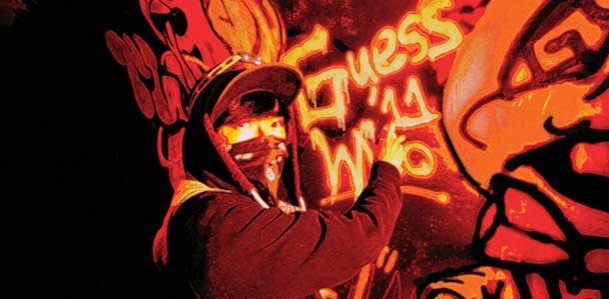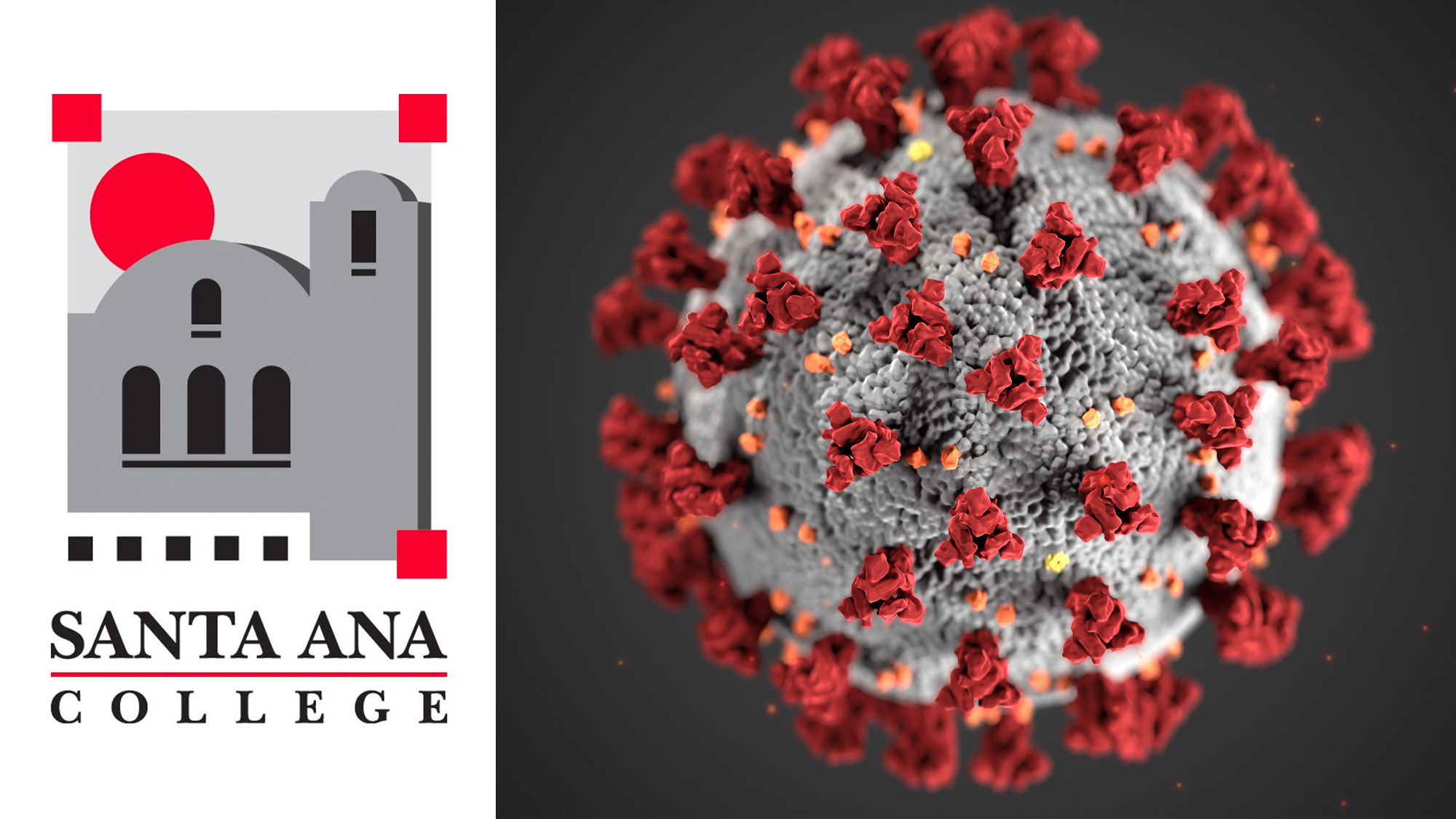He had five minutes between classes and needed a quick detour for instant relief in the Fine Arts men’s bathroom. Student Jeff Ruben looked up from washing his hands. He wasn’t counting on an instant art show. Taggers had carved their unmistakable marks on the mirror.
“Graffitti is expected since we’re in Santa Ana. It can even look nice sometimes,” Ruben said.
Vandalism has taken a toll on college resources, from money to manpower, as maintenance personnel rush to paint over tags – the illegible but recognizable symbols that mark an individual’s or gang’s unique identity.
In 2009, the District reported 51 incidents of vandalism on its two campuses. Santa Ana College accounted for 36 of those cases.
Custodians are constantly pulled away from their designated duties to scrub pen marks and spray paint from bathroom, locker room and perimeter walls, classroom tables and vending machines.
The graveyard cleaning crew, on duty from about 10 p.m. through the early morning, actively search out the illegal artwork, Plant Manager Ron Jones said.
“The next day we determine whether or not the evidence must be recorded, and then our staff quickly removes it,” Jones said.
Removing tags and graffiti as quickly as possible is crucial, said James Wooley, supervisor of campus safety and security.
“Sometimes these things are like a conversation between rival taggers, and they’re likely to answer back if they see the message,” Wooley said.
Carved mirrors are trickier, Jones said. They must be replaced, but the current state budget crisis that has led to deep cuts in district funding prevents the campus from doing so.
The etched-in symbols remain, giving rival taggers opportunity to respond, making bathroom mirrors like the burger joint parking lots where rivals flash their credentials.
That ethos has actually led to identifying specific individuals.
Last year, a student from the Gonzalo and Felicitas Mendez Fundamental Intermediate School tagged his so-called moniker around campus, Wooley said. The middle school student, whose identity cannot be released because he is a minor, was identified by law enforcement through his previous work around Santa Ana.
Campus safety took a photograph, and this helped police match the tag through a database that records tags. The student was identified, and his parents were required to pay for cleanup, Wooley said.
In his seven years as head of campus safety, Wooley says he hasn’t encountered a case where a student or faculty member has been physically threatened by taggers.
Taggers typically avoid confrontation. Their purpose is to advertise their identity and that of their gangs, although not all taggers are affiliated with gangs.
Wooley cites the recent press coverage of tagging that threatened Asians, Latinos, Catholics and Gov. Jerry Brown in cities across central Orange County including Santa Ana, providing media coverage taggers want.
Kim Henry, a Fullerton resident, was arrested last month when she was caught on tape.
While authorities have not been able to link threats against Gov. Brown to Henry, they were able to link her to the racial and religious threats that were sprayed across church walls and community centers. Henry spelled the word Catholics as “cathliks,” inadvertently creating an identifiable moniker.
For Ruben, a global studies major, graffiti as art has devolved into mindless vandalism and urban blight. He offers one solution: “The people caught spraying should be forced to clean all of it up, so they can see what they’re really doing.”
- The two-party system is failing us. - October 19, 2024
- Read our Fall 2023 Print: Vol. 100 No. 1 - October 23, 2023
- Santa Ana College Awarded State Department of Finance Grant - April 2, 2015










